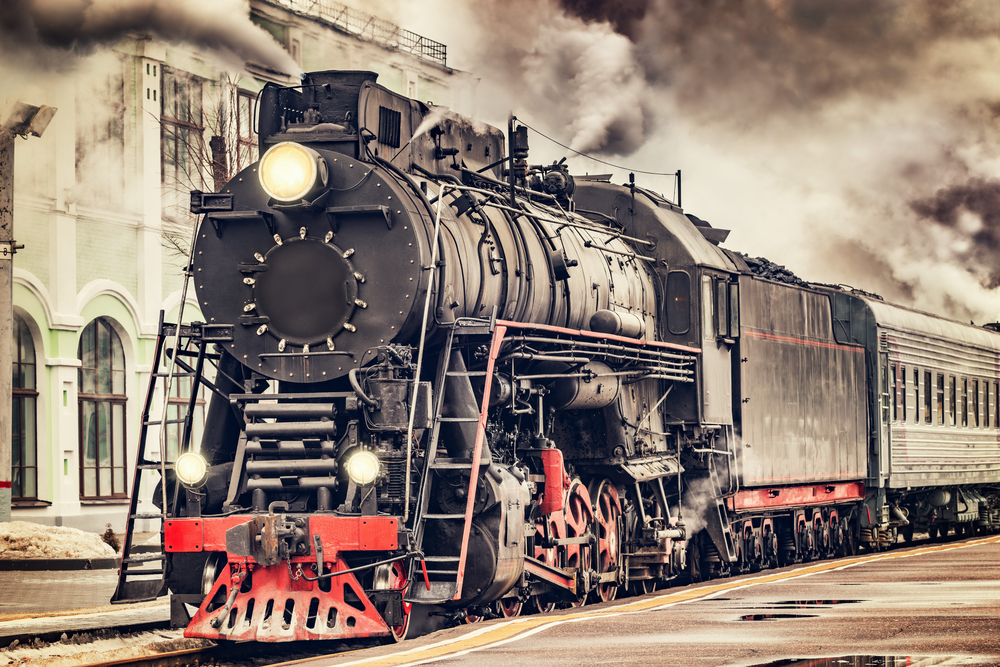During the top half of the 1800s, industrial mechanization and the opening up of new domestic and international markets sparked the “Market Revolution,” a major shift in American economic policy.
The causes of the Market Revolution were the utilization of technologies and developments, goods being produced for a cash market, as well as fast advancements in communication and transportation.
Table of Contents
How impactful was the market revolution?
These philosophical and technological advancements would support the adoption of capitalistic ideals that would drive economic activity across the country.
However, this Market Revolution had a far-reaching impact on American society, affecting family dynamics, gender roles, government control, and regional population movements.
What role did canals play in the Market Revolution?

As marketplaces opened up in the western regions right after The War of 1812, the United States recognized their value to them.
A huge network of canals and roadways was repurposed to transport these items to these new markets.
The Erie Canal was one such engineering feat when it was finished in 1825. The 363-mile canal linked the seaport city of New York with farming hubs in the Midwest as well as the Great Lakes through a network of canals.
Agricultural goods from the Midwest were sent to New York and Europe via the canal and the Great Lakes, allowing municipalities like Detroit, Chicago, as well as Cleveland, to flourish as commercial centers.
How did railways help accelerate the Market Revolution?
Railways were among the fastest-growing sectors in the United States by the mid-20th century.
With the rise in profits and global demand for products, the railroad industry accelerated at a rapid rate.
Both the Midwest and the Northeast reaped the economic benefits of rail connectivity. It was standard practice for trains to transport grain and livestock from the West to the East for domestic use or export to Europe.
Growing demand for railroads and investment earnings from those profits fueled additional investments in the coal, timber, and oil industries, which all became major employment areas in the country.

How did the Market Revolution benefit young people?
The requirement for industrial workers spread throughout the economy as the nation’s industries became more automated.
Before this, young people were motivated to enter the workforce through an apprenticeship program, but today they are being persuaded to relocate to cities where they may obtain a wage job.
Farmers were compelled to change from conventional livelihood (self-reliance) cultivation and trading of goods towards a more industrialized (for profit) one crop method because of the deterioration of the training program and the shortage of labor in remote regions.
Steel plow innovations by John Deere, and a reaper by Cyrus McCormick, were crucial for helping farmers meet the growing global and regional demand for agricultural commodities.
What led to shifts in population during the Market Revolution?
Most people choose to live and work in places where they can provide for their families. More and more people left the countryside to work in cities and factories throughout the 19th century.
The Lowell Mills in Massachusetts, which supported the textile industry, was a good demonstration of factory job prospects.
They encouraged the younger generation to leave their villages and earn wages. Thousands of young agricultural laborers moved to the cities in the Northeast and Midwest in search of better job opportunities as factories sprang up all over the region.

Due to increased trade and transportation, even smaller towns within major metropolitan areas saw population increases.
Several significant distribution centers grew along river lines, including Pittsburgh, Cincinnati, and St. Louis.
By 1920, more people lived in urbanized areas for the very first time in the nation’s history as the population grew in the late 19th century.
How was women’s place in families and society affected during the Market Revolution?
Many women took advantage of the expanding demand for factory employees brought on by the changing market economy.
Many young women left the countryside for the city in search of excitement and opportunity.
To combat the long-held traditional assumption that women should not participate in areas of society other than the house, as their income increased, they became more interested in political and social reforms.
What did women do during the Market Revolution to cement their role in society?
Reform movements of the 2nd Great Awakening, such as female suffrage and the abolition of slavery, were prevalent in the early part of the 19th century as a result of religious influence.
The patriarchal structure that had previously ruled the country was thrown into disarray when women began actively participating in politics and society.

Home became the place to escape the rigors of the day’s work as factory pay took over as the main source of money.
The emergence of distinct spheres was beginning. Homes, where men nonetheless expected women to conform to stereotypical gender roles, became a bone of contention for new social stances on female equality.
The domestic sphere became a battleground. In the same way, some women fought against being forced into the domestic sphere.
Many campaigned for broader participation in decision-making and educational opportunities, often against their spouses who were reluctant to cede too much authority.
What role did unions play during the Market Revolution?
Many factory workers started demanding a larger portion of the business earnings through better compensation and benefits as the number of employees expanded and firm profits climbed.
Rich vs. poor raged across the nation as the gap between those with and those without became starker.
Workers just weren’t planning to give in to the demands of their employers, who wanted to impose even more authority over them.
Women textile workers went on strike as their wages were lowered due to falling textile prices as production outstripped demand.
Immigrants began flooding the United States in the 1850s, drawn by lucrative jobs in the railroad and steel sectors and the promise of financial fortune following the gold rush in California in 1849.

What was the role of the government in supervising the Market Revolution?
Increasing corporate influence and power compelled the US government to take on a more active role in protecting the general public.
The distinction between corporate and individual rights grew increasingly muddled during the Market Revolution.
When it came to deciding how to strike a proper balance between individual freedoms and the interests of private corporations, the US Supreme Court set the bar high.
The Supreme Court ruled in 1837 Charles River Bridge vs Warren Bridge that the public’s needs were more important than the rights of a private corporation.
In 1871, in Munn v Illinois, the Supreme Court further established the government’s right to regulate private businesses by ruling against the railways on public interest grounds within the government’s authority to control interstate trade.
The Antitrust Acts in 1890, then later in 1914, would contest the dominant trusts that would later form as a result of the financial innovation and progress of the Market Revolution.
How did the Market Revolution help America ascend to the status of global superpower?
In the middle of the nineteenth century, as the country headed toward civil war, the economy began to change into a global industrial and agricultural force.
Westward expansion and the emergence of urban financial hubs were thwarted by advances in transportation, communication, as well as manufacturing.

During the Industrial Revolution, the North and the Mid-West prospered, while the South clung to slavery and cotton cultivation.
As a result, the economic systems of the United States were transformed by the Market Revolution.
A century later, the United States emerged as the most powerful industrial force in the world following the Civil War and the 2nd Industrial Revolution.
How were the work hour restrictions implemented during the Market Revolution?
Working-hour restrictions and child safety were top priorities for unions in the 1840s. The Farmers’ Association in New England as well as Other Workingmen organized to bring a ten-hour workday to a variety of industries in the New England region.
Laborers would have more “time and opportunity for moral and intellectual advancement” with a ten-hour workday, they said.
The Ten-Hour Movement swiftly expanded from Boston to other metropolitan areas, including Philadelphia, after a city-wide walkout in 1835.
The male working-class movement to reveal the emptiness of the paternal claims of bosses and their language of moral authority was part of the struggle for recreational time.
Was child labor exploited during the onset of the Market Revolution?
During the American labor movement in 1842, child labor became a major concern. Child laborers received more assistance from the middle class than adult workers.

Families living in Fall River, a largely child-employed southern Massachusetts mill town, petitioned the state legislature for legislation “prohibiting children from working in manufacturing establishments at a period and for actual hours that must be entirely damaging to their wellbeing and conflicting with the academic achievement that is crucial to their welfare.”
Children under the age of twelve are no longer allowed to work more than 10 hours a day in Massachusetts.
All New England states had adopted Massachusetts’s example by the mid-nineteenth century.
Between 1840 and 1860, these regulations gradually raised both the minimum age for employment protection and the minimum age for receiving a free public education.
It was agreed that children between the ages of nine and twelve should not be allowed to engage in harmful occupations and that youngsters from twelve to fifteen should balance their jobs with education and leisure time.
What struggles did the Market Revolution initially face?
To keep women and children safe within the home domain, male workers aimed to enhance their earnings and employment conditions.
There were, however, only modest gains in employment, and the revolution remained tame.

Labor activity in pre-Civil War America remained generally committed to the free labor ideal, despite its challenges to industrial working conditions.
Workers later backed the Northern Free Soil Movement in its fight against the spread of slavery in the 1840s, emphasizing the northern commercial platform’s supremacy over the southern practice of slavery while also attempting to overhaul capitalism, which was a much less successful endeavor.
What was the Market Revolution in a nutshell?
Enslaved labor from the south provided the raw materials for northern manufacturing, which was overseen by a new middle class of wage workers.
This national industrial enterprise was made possible by the development of new modes of transport and machinery, as well as the creation of new labor unions.
Industry and the cash economy brought people from different locations together, while ideology divided the United States.
During the height of the American Revolution, political leaders in the North used the celebration of contract freedom to claim the heritage of the American Revolution for the North.
Although industrial child labor increased, worker demands for unionization, women’s vulnerability to poverty, and the migration of non-Anglos left many Americans wondering about the significance of liberty aftermarket revolutions.

















